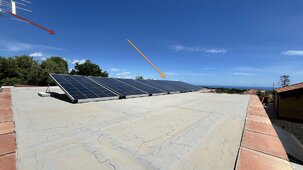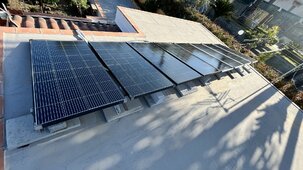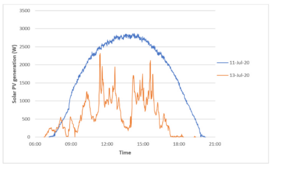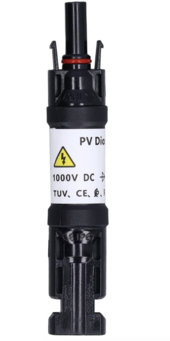frankz66
New Member
Hi everyone, I wanted to have some advice on the arrangement of the solar panels. Coe from attached my panels are facing south evenly, producing during the day in a constant way. I noticed that in the late afternoon around 17 pm, the sun goes in the direction of the sunset, so it lowers intensely irradiating the first 4 panels and a little less the other 4 panels to follow. The red arrow roughly indicates the direction of the sun's rays and I realized that being inclined by force of things, nothing can be done. I write this, because at 17 pm I see that the power of the regulator fluctuates slightly from 190 w to 250 w. Moreover, in that precise moment for about 15 minutes I find myself a very slight oscillating shadow due to the presence of a palm tree. If you look closely at the photo we are talking about small darkenings for a few ten minutes ... Being 8 panels 2s2p then the first 4 in series and to follow the second four to follow and then go down to the regulator in parallel. I wanted to have your opinion, whether it is appropriate to configure the blocking diodes or not. Finally, I wanted to point out that in the morning the opposite phase happens, the sun rises in the east, so the situation is reversed, the first four due to the inclination of the sun are radiated a little more than the others. I think all this is normal, but I still wanted your opinion. The panels have a total of 1450 kwp, they work well and I have also seen from the software monitor of power peaks equal to 1350 kwp. Also having a system with agm at 48v 110 amps, even if the house is not manned 24h/24 I arrived at the producer in the hours of the day so from 7 am to 19 pm 4.5 kwh. Thank you all .







